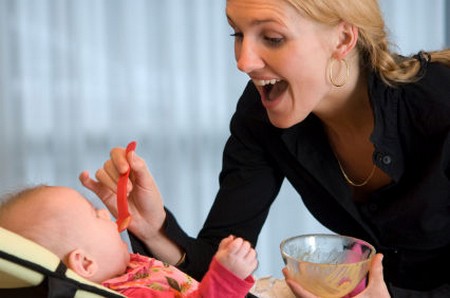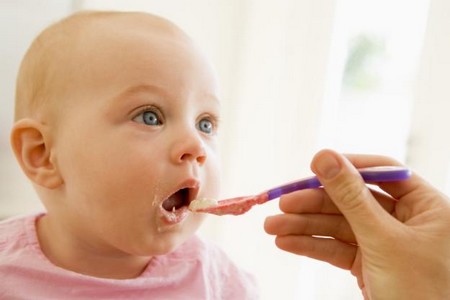Best Way to Introduce Solid Food to Your Baby
Introducing solids is a major milestone in your baby’s development. Your baby is not physically able to cope with solid food before she is four months old. Her digestive system is too immature to deal with breaking down food, and she doesn’t have the muscular control in her jaws to move food from the front to the back of the mouth until this time. Her kidneys are not yet ready to process food, either.
Your baby is unique and will only be ready to move on to solids at her own pace, but you should oiler her first food somewhere between four and six months, took for signs that she is ready. If she is over four months old and seems to be hungrier than usual, wakes more often during the night, gets excited when she sees others eating or has food near her or tries to grab it, she may be trying to tell you something. Sometimes, babies who are ready to be weaned stop putting on weight too.
Taking it slowly
For the first two weeks just a teaspoon or two of runny fruit puree, such as apple or pear, and/or baby rice once a day will be all she needs. At this stage you are introducing her to new tastes and consistency, and getting her used to having something slightly more solid in her mouth. If she is too hungry, she won’t have the inclination or patience to try solids, so choose a quiet time in between feeds. Don’t force her to take the food -mealtimes should be fun, not a trial.
Gradually increase the amount of solid food until you are giving her solids three times a day. At the same time gradually increase the lumpiness of the purees. Avoid giving her wheat-based foods, milk (other than breast or formula), nuts, eggs, citrus fruits, fatty foods, or spices before she is six months old. These may upset your baby’s stomach or trigger an allergy if given too early.
Although starting to introduce your baby to solids is exciting, it can be extremely frustrating. This is the first time that she will try food other than milk, experiencing new tastes and textures, and it may take a while for her to get used to solids. At first she will just learn to suck from a spoon, but as she gets on to more lumpy food, she will soon start to use her gums to mash it up. Weaning takes a lot of time and patience and, in the beginning, more food will end up smeared around her face or on the floor than in her mouth. Don’t worry about how little your baby gets into her mouth – her milk will be her main source of nutrition for some time to come yet.
Eating and social skills
Eating is a very social habit, and as she learns to sit up she can begin to join in family mealtimes. These will also provide a chance for her to develop her personality as she discovers and expresses her likes and dislikes.
Your baby is a keen copycat. She will watch you eat, and try to mimic you, picking up a spoon or rusk and guiding it to her mouth by herself. Although messy, allowing her to experiment like this is important, as it represents a leap forward on the road to independence. It also helps sharpen her hand-eye coordination.
Research shows that good eating habits start young. So, avoid giving your baby food with added sugar, as this is likely to give her a taste for sweet things, which may cause tooth decay later on.
Categories
Advertisements
Recent Articles
 How to Understand Bed Sizes – A Small Guide
How to Understand Bed Sizes – A Small Guide How to Select Some Must Have Kitchen Accessories
How to Select Some Must Have Kitchen Accessories Best Way to Change a Car Tire
Best Way to Change a Car Tire Best Way to Write an Affirmation
Best Way to Write an Affirmation Best Way to Take Charge of Your Financial Life
Best Way to Take Charge of Your Financial Life Best Way to Survive a Party When You Don’t Know Anyone
Best Way to Survive a Party When You Don’t Know Anyone Best Way to Stop Self Sabotaging Yourself
Best Way to Stop Self Sabotaging Yourself Best Way to Start Journal Writing
Best Way to Start Journal Writing Best Way to Speak with a Powerful Voice
Best Way to Speak with a Powerful Voice Best Way to Simplify Your Life
Best Way to Simplify Your Life Best Way to Respond to a Put-Down
Best Way to Respond to a Put-Down Best Way to Reduce Acne Breakouts
Best Way to Reduce Acne Breakouts Best Way to Recover from Dining Disasters
Best Way to Recover from Dining Disasters Best Way to Quit Your Job Gracefully
Best Way to Quit Your Job Gracefully Best Way to Make Your Own Website
Best Way to Make Your Own Website



Leave a Reply